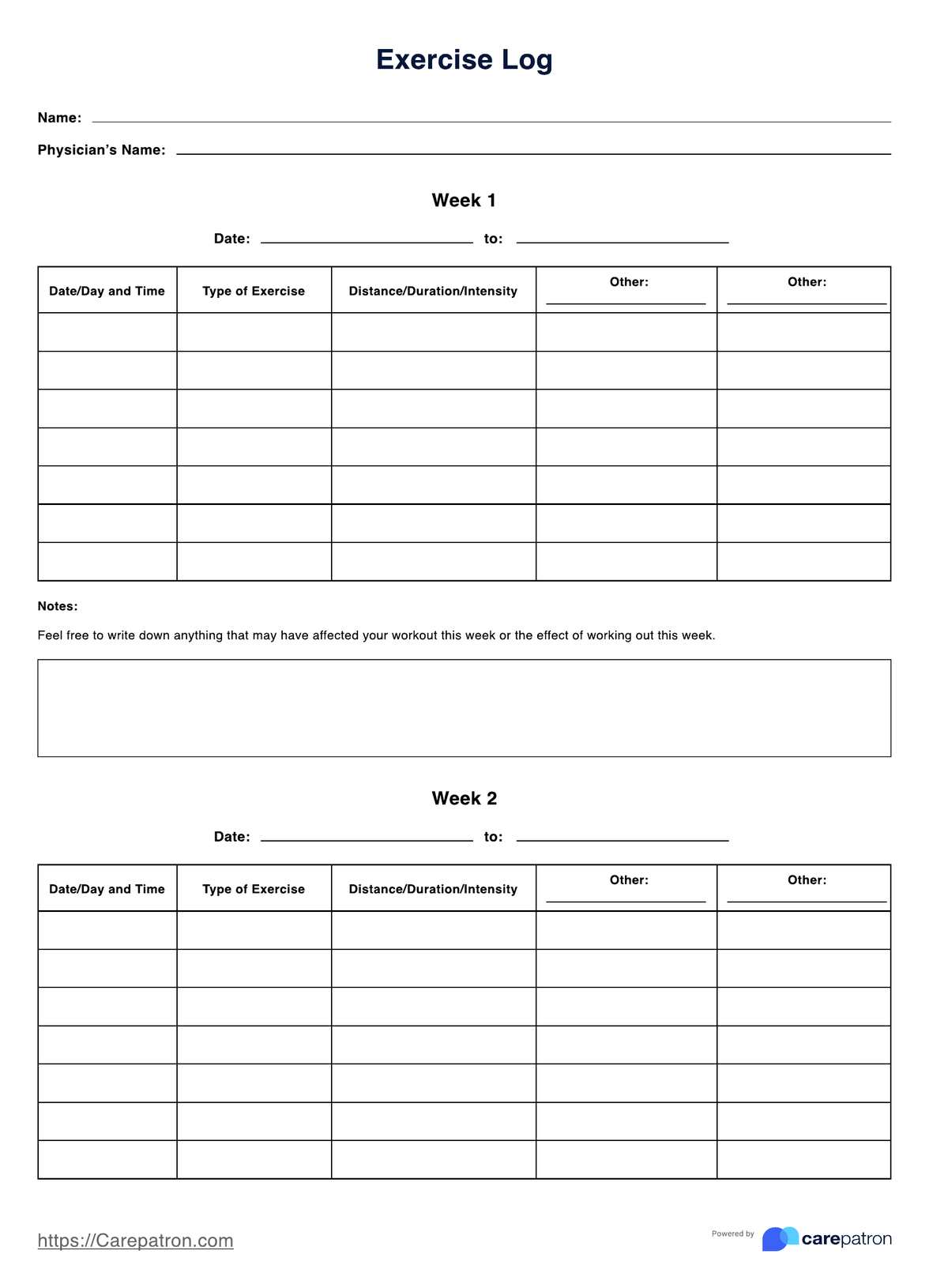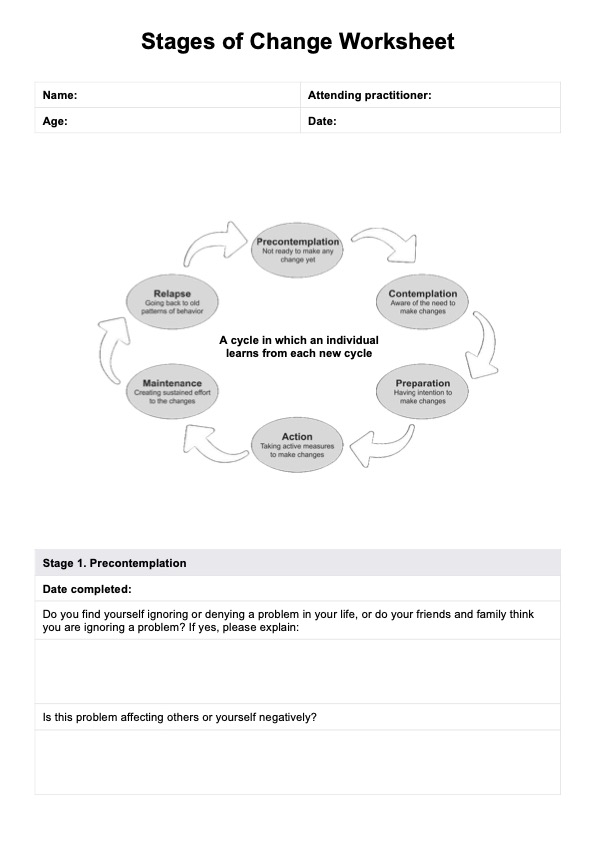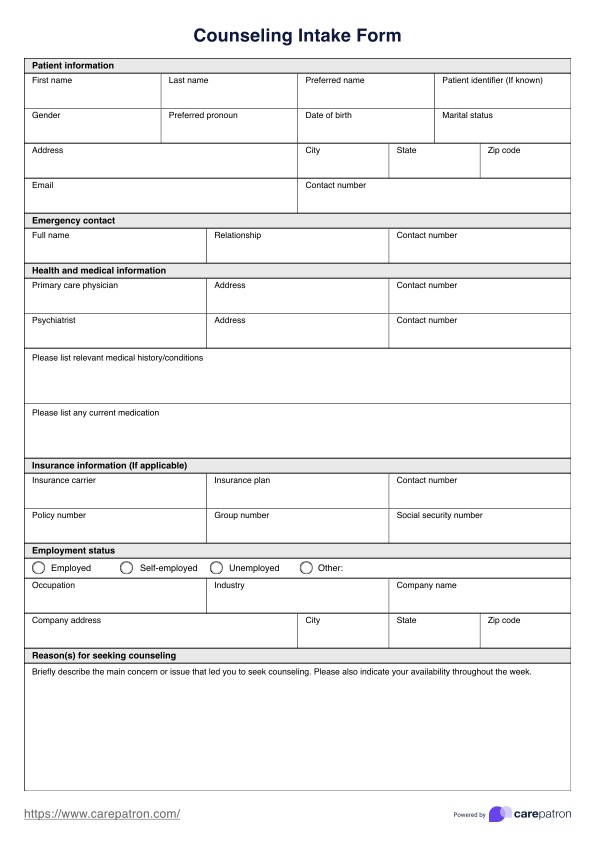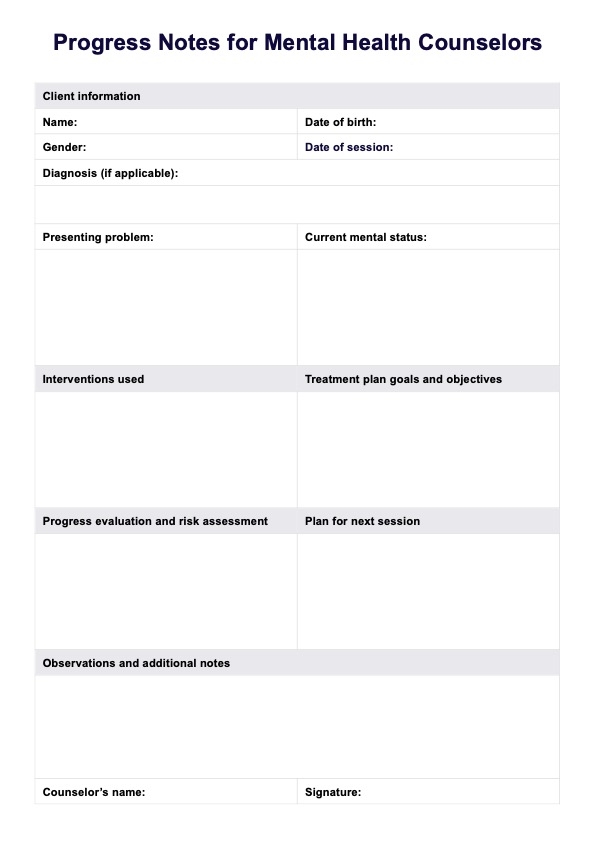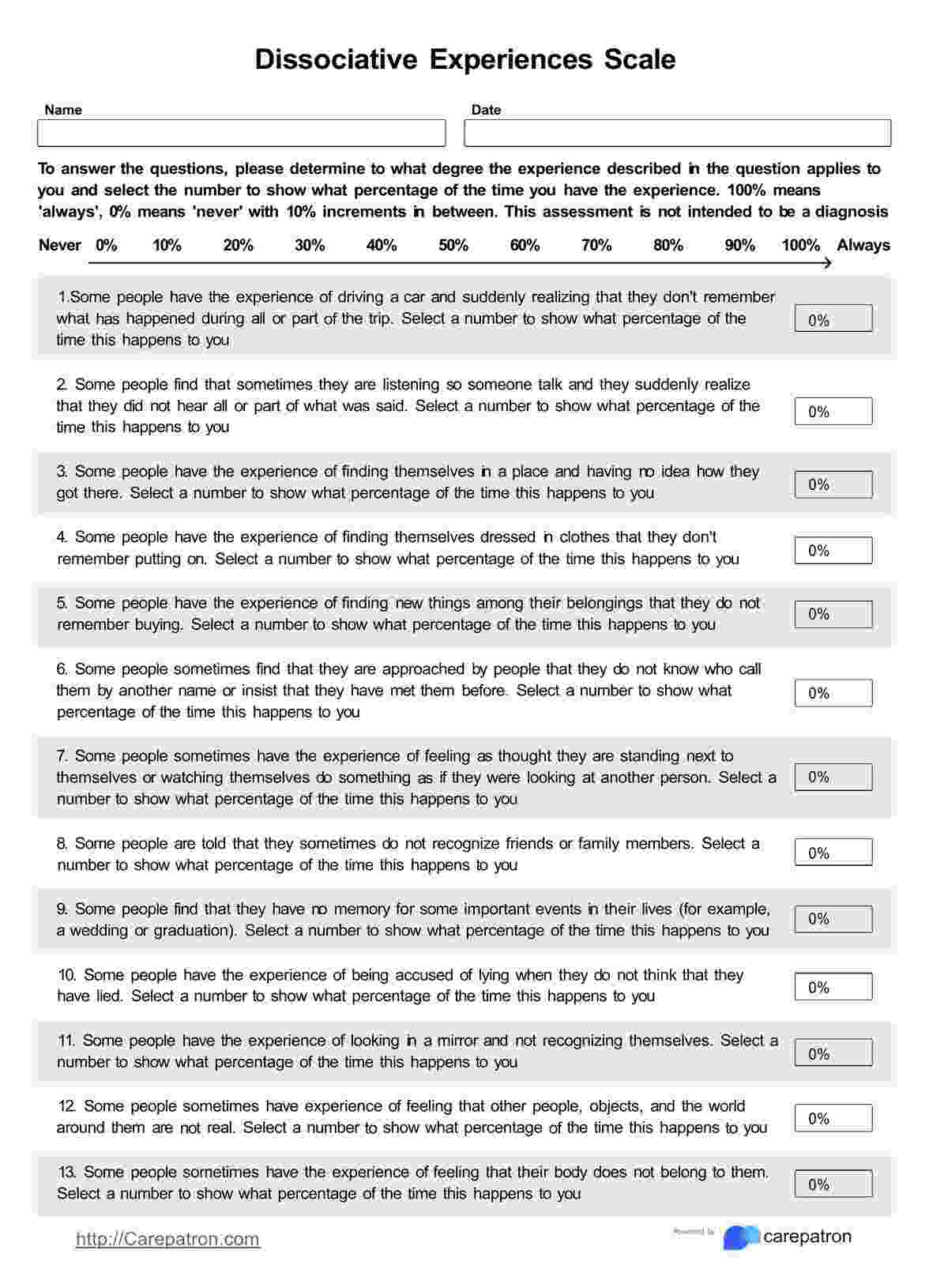Triggering Events ACT Worksheet
Discover how a Triggering Events ACT Worksheet can help individuals manage their reactions to triggers. Download a PDF copy and use it in your practice.


What is a Triggering Events ACT Worksheet?
Acceptance and Commitment Therapy (ACT) is a form of psychotherapy that encourages individuals to accept their thoughts and feelings rather than attempting to alter or avoid them.
Triggers are events or circumstances that can lead to uncomfortable emotions or thoughts. These may include certain places, people, or personal reflections resulting in stress, fear, or anxiety. In Acceptance and Commitment Therapy (ACT), triggering events are seen as opportunities for personal growth and development.
Instead of struggling against potentially harmful emotions, ACT teaches techniques to acknowledge these feelings and commit to actions that align with personal values. This approach can be particularly beneficial for managing reactions to triggering events, as it fosters increased emotional resilience and psychological flexibility.
A is designed to help individuals identify their triggers, determine the emotions they experience when exposed to them, and practice cognitive defusion techniques such as mindfulness-based strategies to reduce the intensity of their reactions.
The worksheet can be used to explore how a person’s reactions to triggers may have changed over time and how they can use acceptance-based strategies to manage their emotional responses. It is also an excellent tool for helping individuals gain insight into why certain events are personally triggering and what methods work best for dealing with them.
Triggering Events ACT Worksheet Template
Triggering Events ACT Worksheet Example
How to use the Triggering Events ACT Worksheet
Our free Triggering Events ACT Worksheet is designed to help individuals better understand and manage their reactions to triggering events. Here's how to use it:
Step One: Get a copy of the template
Access the Triggering Events ACT Worksheet through the link provided on this page. You may also download it from the Carepatron app or our resources library.
Step Two: Discuss with your client
Explain what a Triggering Events ACT Worksheet is and why it can help manage reactions to triggering events. Ask your client to share a few of their triggers and how they typically respond when exposed to them.
Step Three: Fill out the worksheet
Work with your client to complete the worksheet. Have your client identify each trigger, the associated emotions, and the techniques they could use to reduce their intensity of response. Encourage them to practice the strategies you discuss in real-life situations.
Step Four: Follow up with your client
Schedule a follow-up session with your client to review their progress. Discuss how effective their chosen strategies have been and explore any changes that need to be made for better results.
When would you use this Triggering Events ACT Worksheet?
You can use our free Triggering Events ACT Worksheet whenever you need to help your client better understand their triggers, reactions, and potential strategies for managing them. Alternatively, you can utilize this worksheet to:
Identify and label emotions associated with triggering events
Our Triggering Events ACT Worksheet can help you and your client identify the emotions associated with triggering events. This can allow them to better understand their reactions and learn how to manage them.
Develop coping strategies for managing triggers
The worksheet also allows you to develop a list of potential coping strategies for managing triggers. You can then help your client experiment with these strategies to determine which suits their needs best.
Reflect on past triggering events
The Triggering Events ACT Worksheet can also be utilized as a tool for reflection. You can use it to encourage your client to reflect on past triggering events and how they responded. This can provide valuable insight into patterns of behavior and areas for improvement.
Teach clients about acceptance and commitment therapy
Our worksheet can serve as an educational resource to introduce your clients to the principles of ACT. It can help them understand how acceptance of feelings, mindfulness, and commitment to actions can help them manage their triggers more effectively.
What are the benefits of using this Triggering Events ACT Worksheet?
Here are some of the benefits of using our free printable Triggering Events ACT Worksheet:
It's versatile
You can use this template in many different settings. It can be used as part of your regular therapy sessions, in group counseling, or even for self-reflection exercises.
It's user-friendly
The worksheet is designed to be easy to use and understand. The instructions are straightforward, and the questions are clearly organized. This allows your clients to fill out the worksheet quickly and easily, allowing them to track their triggers and develop coping strategies.
It's customizable
The worksheet is customizable and can be adapted to fit your client's specific needs. You may adjust the questions and set up different categories depending on what your client finds helpful or necessary.
It promotes independence
By teaching clients to identify their own triggers and develop effective coping strategies, this worksheet encourages them to take more ownership of their mental health. This can be especially helpful for clients with difficulty expressing themselves or finding the words to discuss their feelings.
It promotes open communication
The worksheet is a great way to open conversations between you and your client. By discussing triggers, feelings, and coping strategies, the template can help both parties gain insight into how the client's behavior is affected by external factors. This can be an invaluable tool for understanding why certain events or situations cause distress for your clients.
Commonly asked questions
The time to finish the worksheet depends on the client's situation, but this worksheet typically takes 15 to 30 minutes to complete.
The Triggering Events ACT Worksheet helps to identify and address any obstacles that may have been preventing a person from accepting their emotions. With this worksheet, they can start to view their emotional responses more positively and how they are affected by external triggers.
This worksheet is best used when clients struggle with their emotions or feel overwhelmed by certain triggers. It can help people learn to accept and manage their emotional responses more productively.


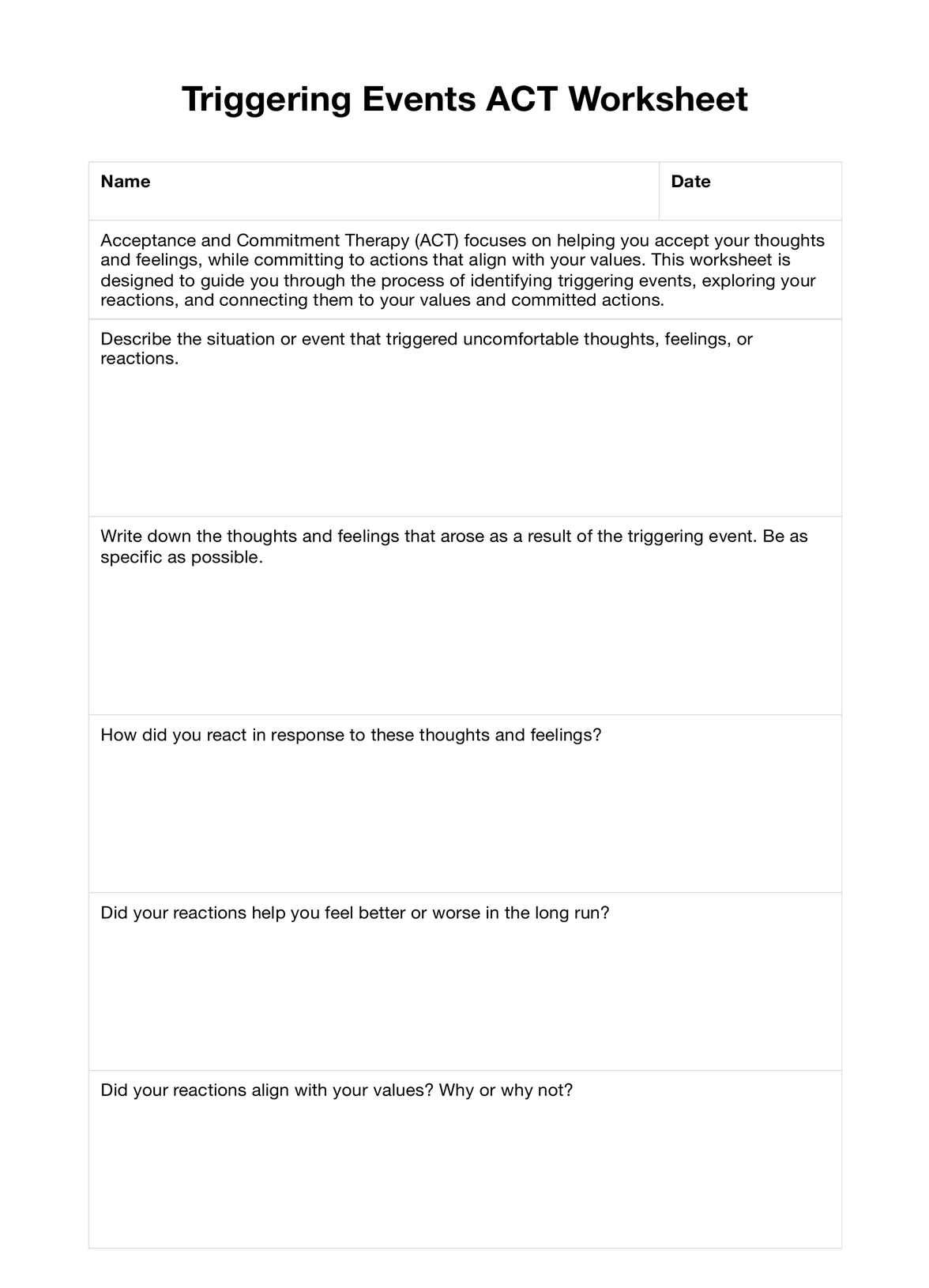
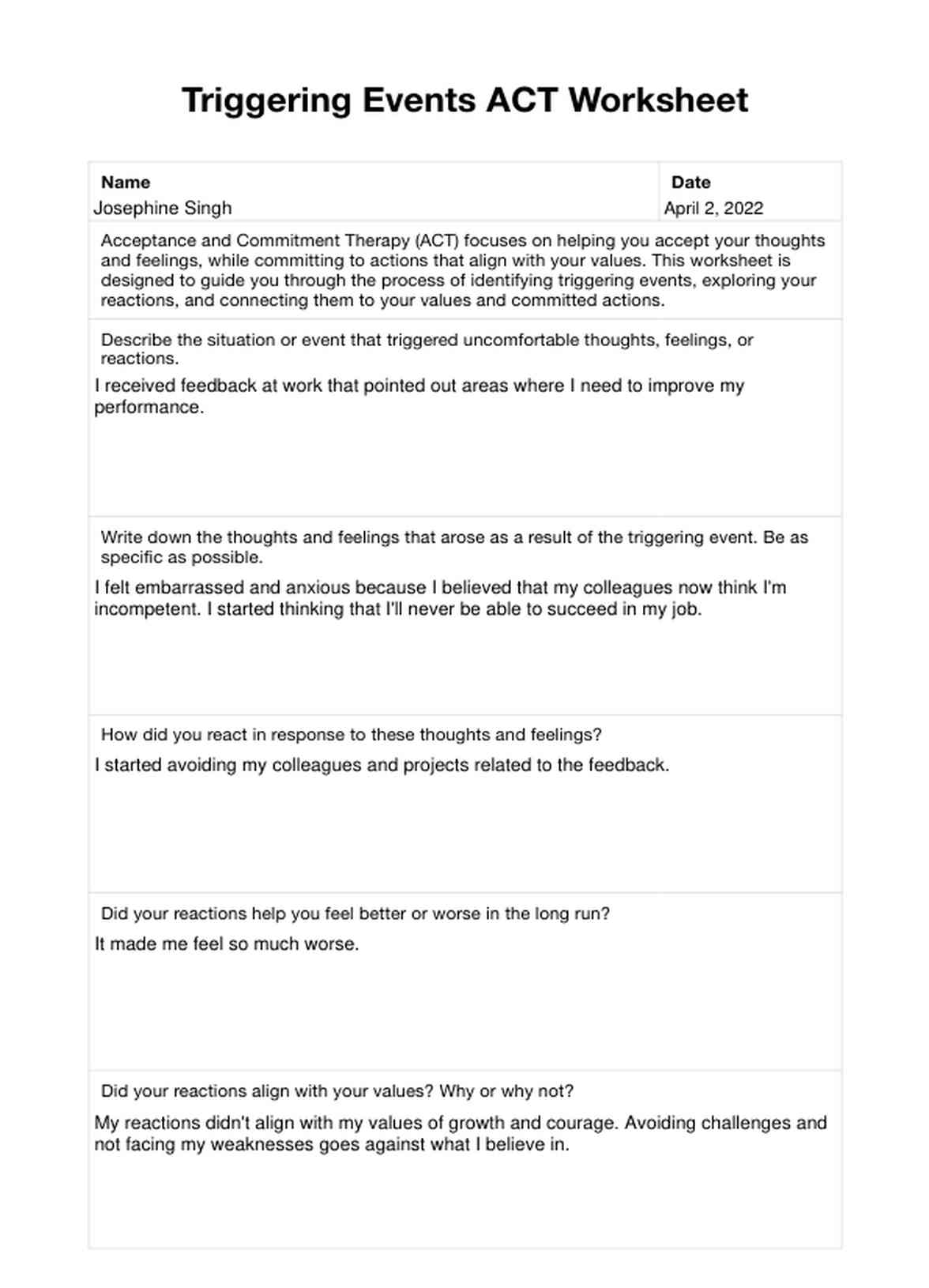















-template.jpg)




























































































